|
Mirella Barberio_website artist |
![]()
2017 - 57a Esposizione Internazionale d'arte, Biennale Venezia
2017 - 57th International Art Exhibition, Venice Biennale
![]()
![]()
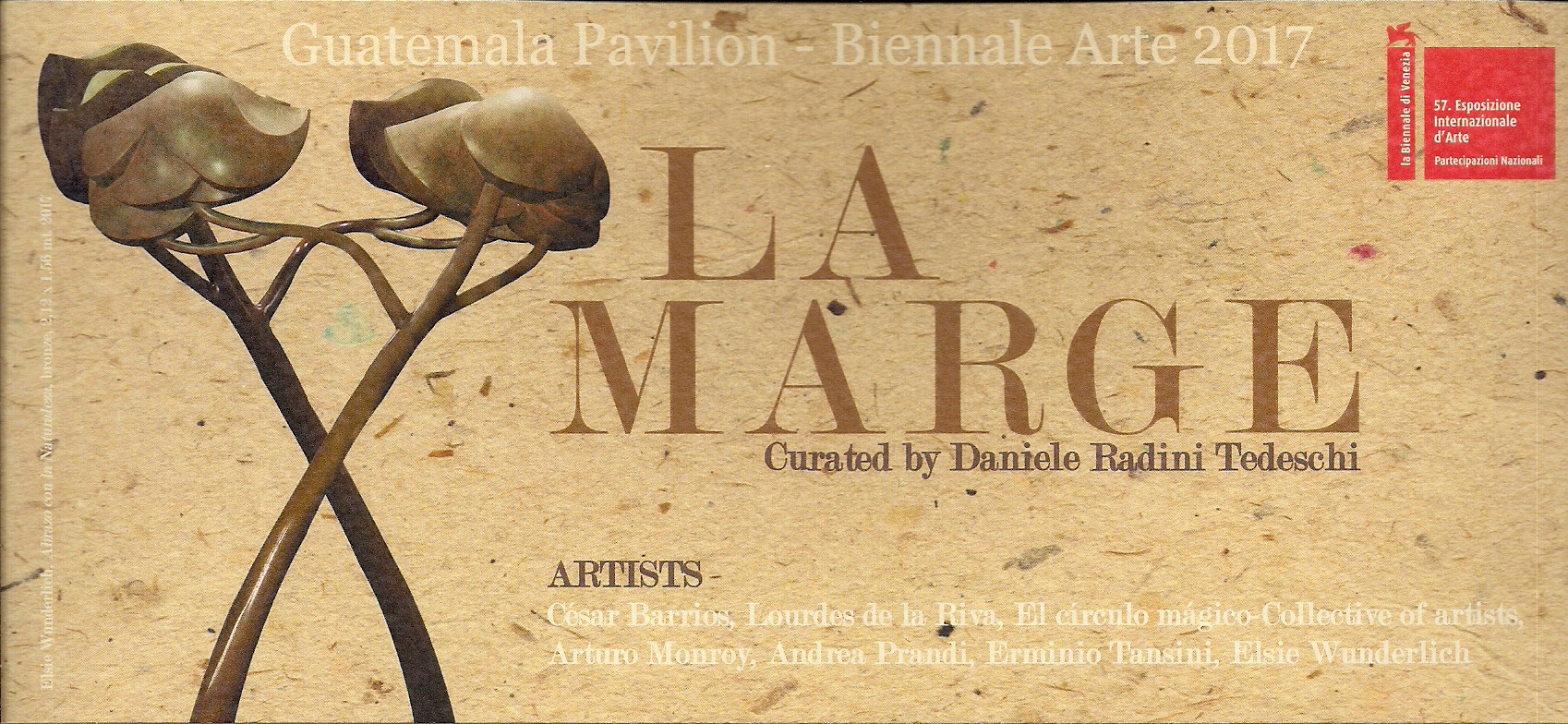
![]()
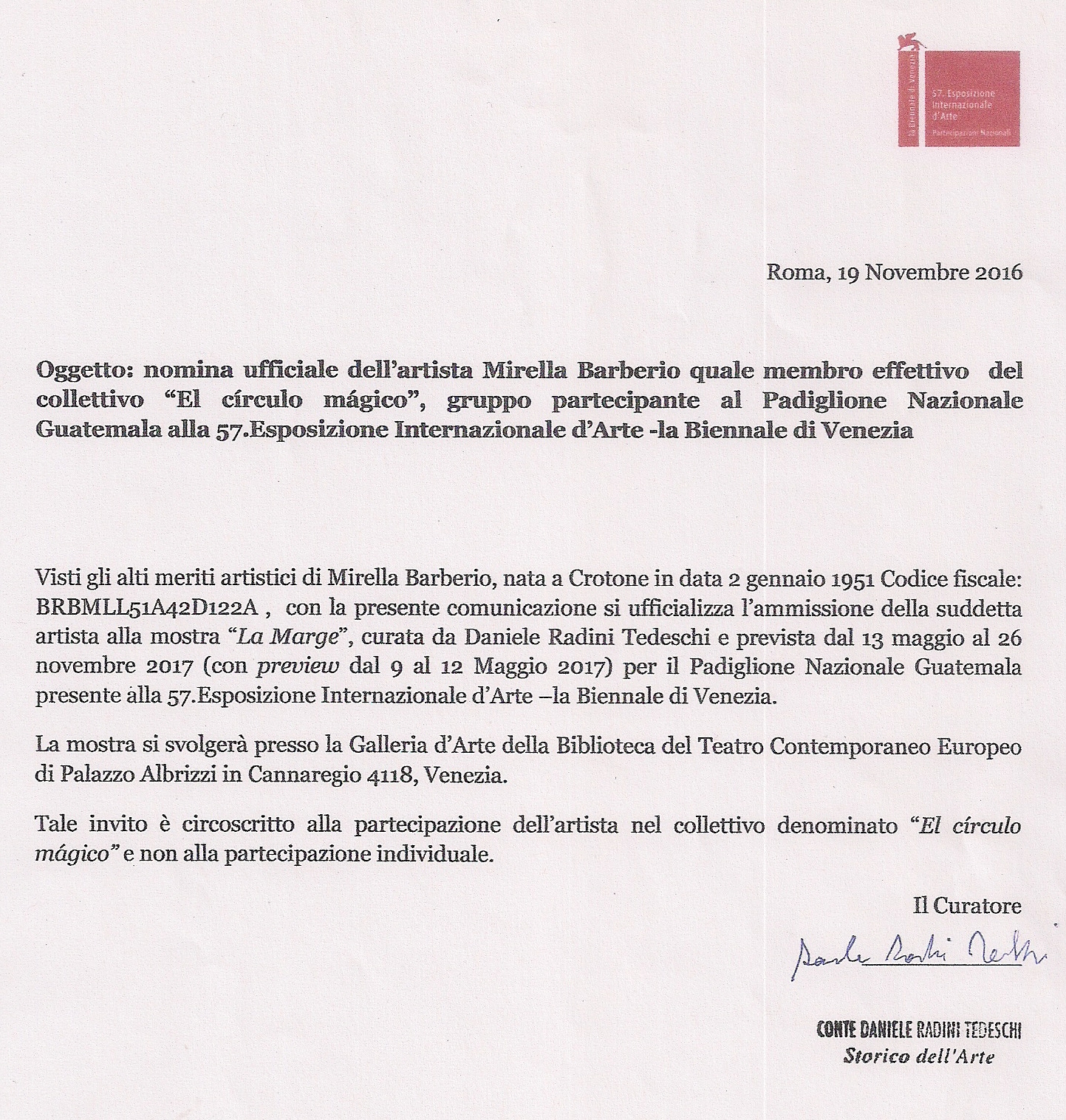
![]()

Esposizione Padiglione Guatemala Biennal Arte 2017
Intervista al curatore dell'esposizione Daniele Radini Tedeschi
Giardini del Padiglione Guatemala - Mirella Barberio Intervistata
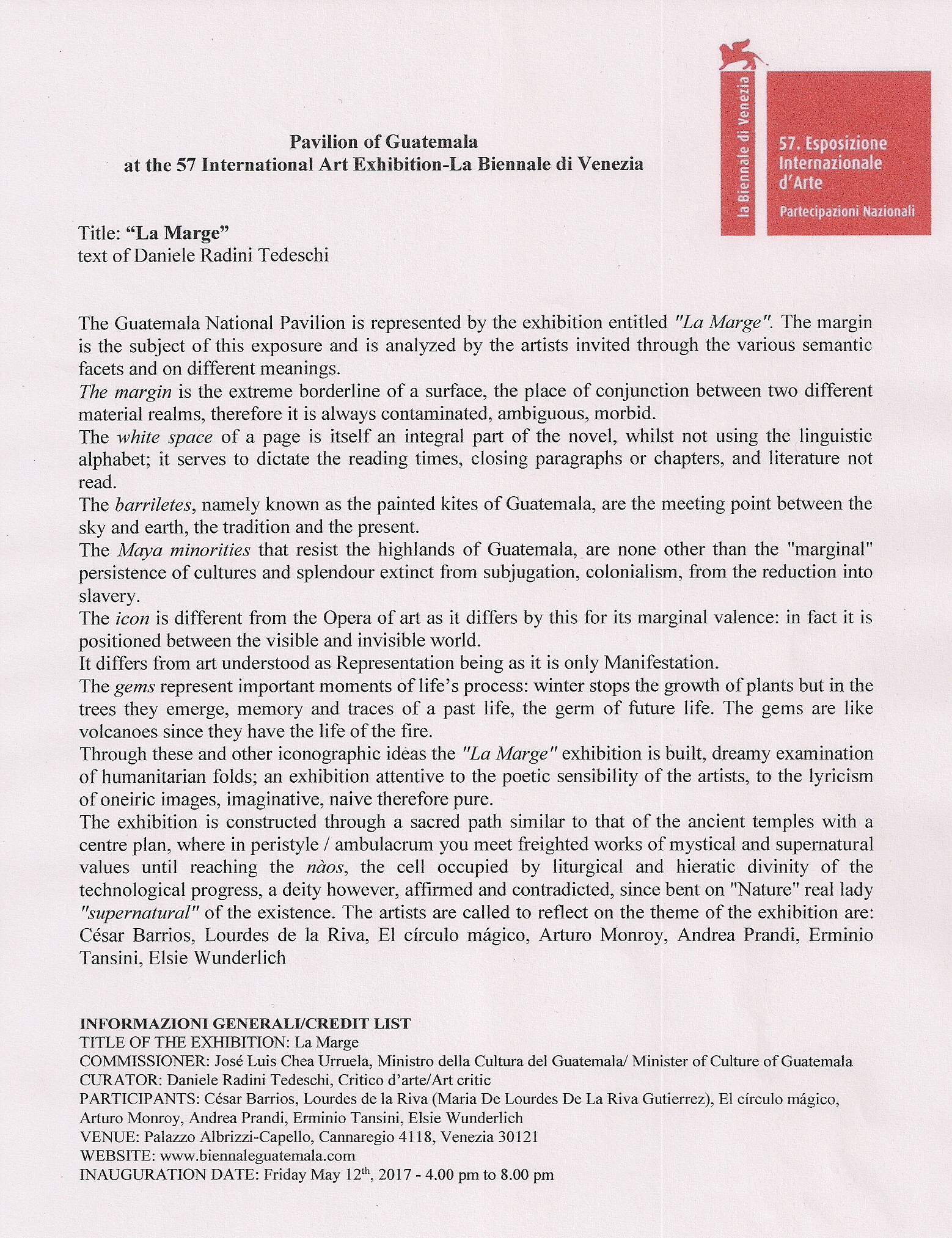
Exhibition entitled "La Marge", text of Daniele Radini Tedeschi
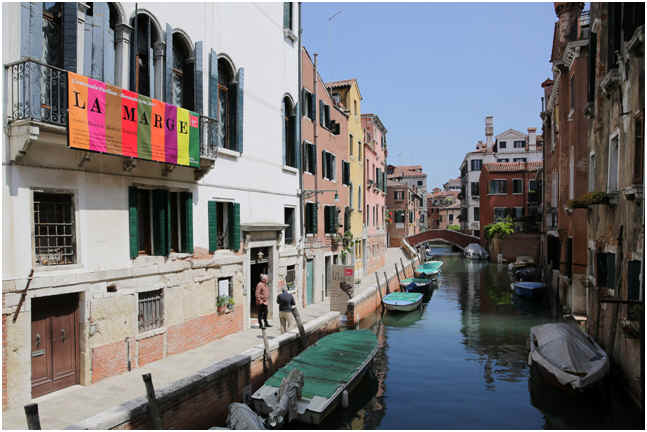
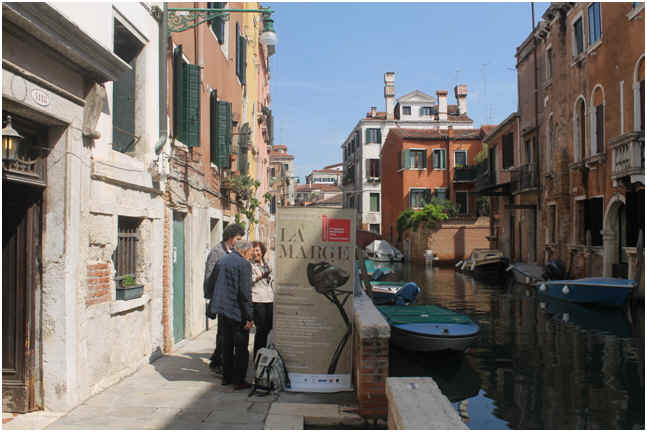
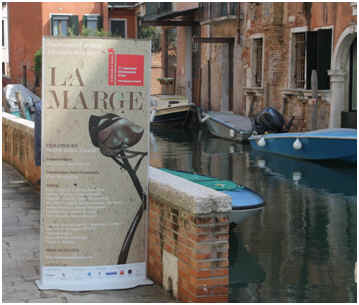
Palazzo Albrizzi Capello is home to the 57th
International Art Exhibition - Venice Biennale,
Promoted by the Ministry of Culture
of Guatemala
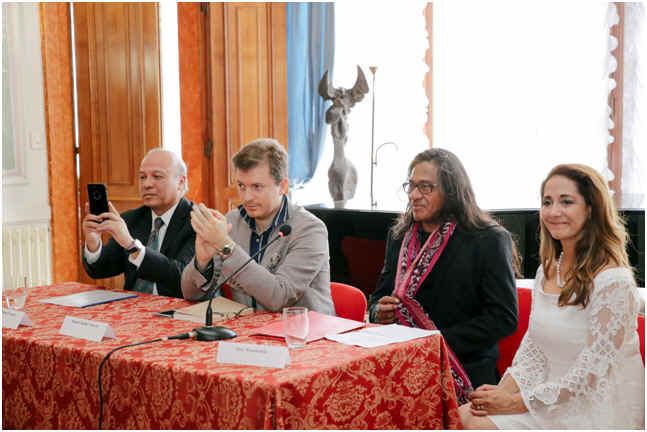
Il curatore Daniele Radini Tedeschi presenta la mostra 'La Marge'
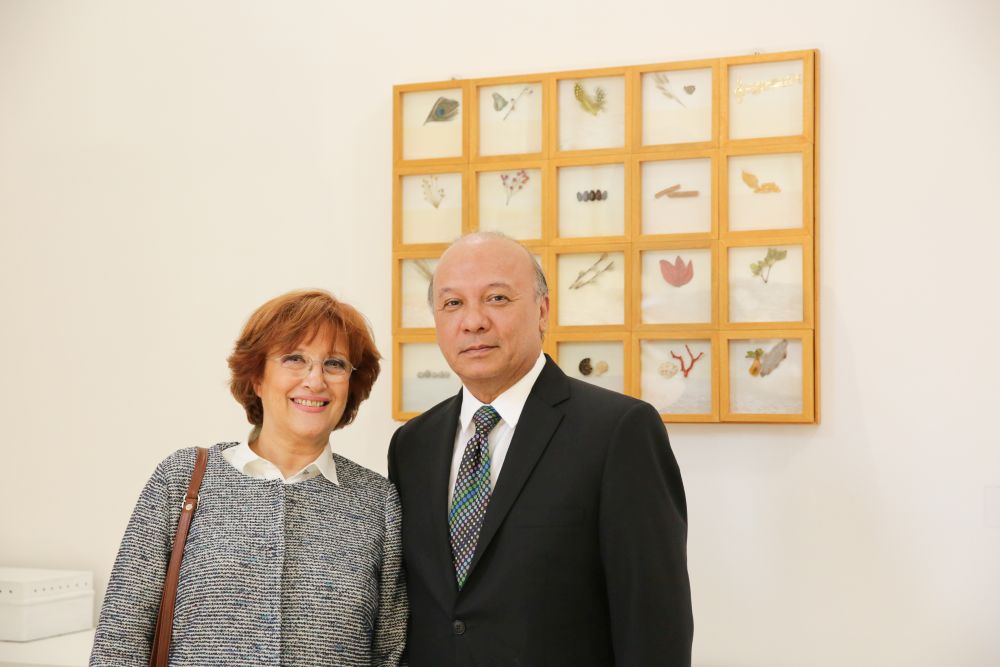
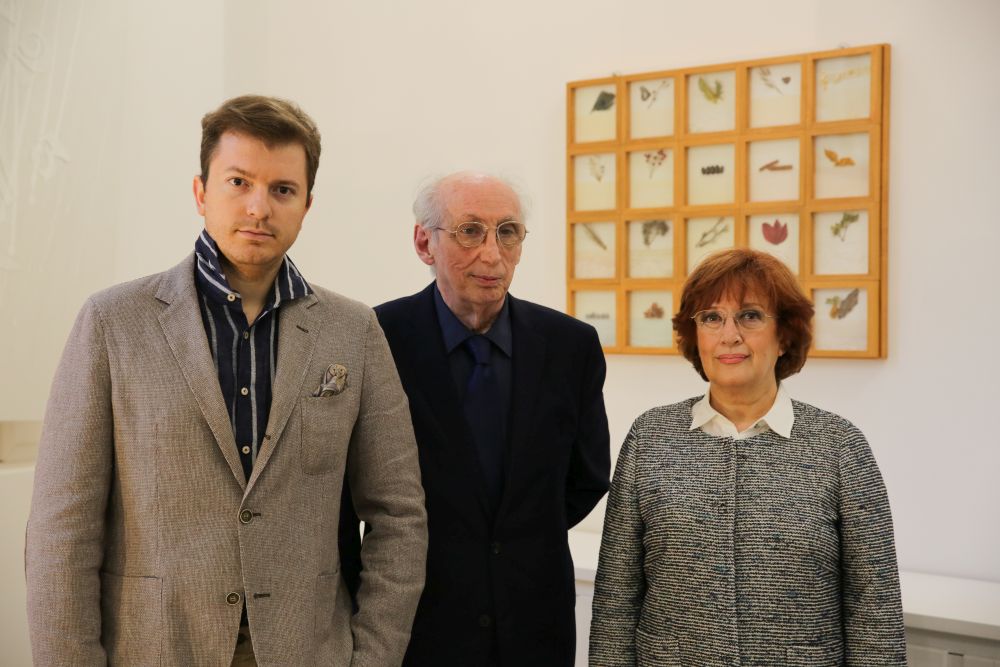
Mirella Barberio con il Ministro della Cultura del Guatemala e copn il curatore della mostra Daniele Radini Tedeschi
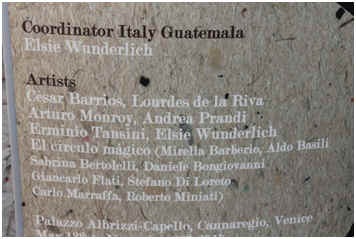
The artists who exhibited at the 57th International Art Exposition - Venice Biennale
Exposed work
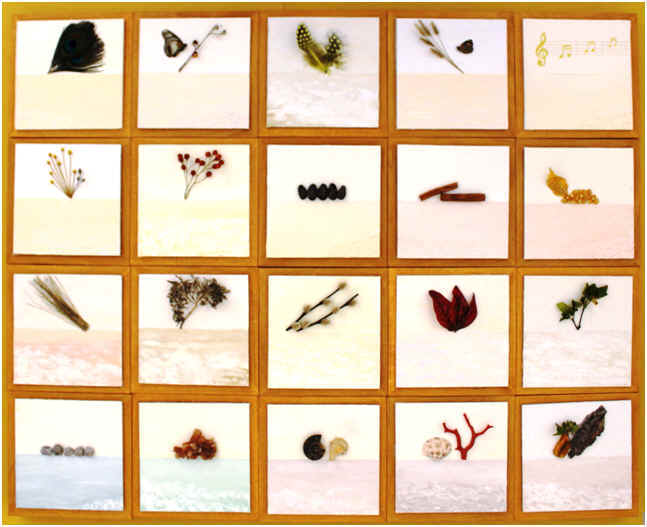
“Oltre
il margine”, 2017 -
Olio su tela e
materiali vari,
cm. 69 x 86,5 x 4,5.
“Over the edge”, 2017 -
Oil on canvas and various materials, cm 69 x 86,5 x 4,5
Descrizione dell'opera
Premessa
– L’opera va esplorata
partendo dalla componente posta in basso a sinistra e, viva via, sino all’ultimo
comparto a destra contenente il pentagramma e le note dorate indicanti il
confine tra immanenza e trascendenza dall’uomo superato.
Il progetto culturale “La Marge”, è stato
concepito per ideare opere che esplorino il nesso tra realtà materiale e
spiritualità, pertanto ho elaborato la seguente riflessione. La
scienza attuale, parte di un contesto culturale più ampio e articolato, induce a
pensare che l’Universo sia un mare le cui onde siano generate da campi di
quanti, i quali, con forze immani e senza sosta, collidono: attività possente
che modella la materia, la quale evolve adottando le regole di mutamento
geometrico-matematiche. Per elaborare il significato, ho posto l’attenzione
anzitutto sul fatto che sì in
Natura, maestra severa ma anche cornucopia per l’Umanità, la materia procede da
forme atomiche “elementari”, scegliendo un preciso ordine (es. sezione aurea,
simmetria, ecc) e, via via, va verso altre più complesse, colorate, incantevoli,
atte a coinvolgere i sensi dei viventi, quasi infondendo in essi un’“estetica
naturale”; dipoi, però, ho considerato il fatto
che queste forme, nonostante appaiano così
affascinanti da ispirare l’estasi, sollecitano con forza l’esigenza di varcare
il confine
percepito
tra l’immanenza, che esse rappresentano e la
trascendenza intesa
nel suo originario senso di “salire al disopra” dei fenomeni captati dai
sensi. Seguitando,
ho correlato il significante al significato, attuando un percorso estetico
punteggiato da vari materiali ─ frammenti di rocce: simboli della materia
“grezza” primigenia; conchiglie: simboli e della geometria universale (es. la
conchiglia del Nautilus sviluppatasi in virtù della sezione aurea) e
dell’apparato genitale femminile, fonte di vita; corallo:
simbolo dell’Albero
asse
del Mondo, dell’Acqua
origine
del Mondo, del
Rosso-sangue tramite di vita e di generazione; ambra: fonte d’ispirazione per
diversi miti (es. le sorelle
di Fetonte che, trasformato da Zeus in albero, piangono ambra); lacerti di
piante di varie essenze, fonti primarie di cibo, di materiali, di strumenti, di
sostanze chimiche vitali; fiori: simboli del sole; semi: quello del mais (Zea
mays) simbolo di vita, e
quello del cacao simbolo del cuore umano reciso durante i riti sacrificali;
piume di pavone: simboli, presso molte culture, della nascita, di una nuova
crescita, della longevità, dell'amore, della primavera e di concetti complessi;
farfalle, simboli tanto della speranza di ascendere dalla condizione terrestre
alla luce,
quanto della
morte; in
Giappone
una
farfalla indica la donna
giovane, due farfalle che danzano raccontano la felicità coniugale; in Cina
manifestano l’incanto dell’innamorato, oppure l’amata morta che sale al cielo;
in Messico sono simboli del dio della vegetazione Xochipilli, quindi simboli del
fuoco sfavillante collegato col sole, e, infine, del viatico quando sono dipinte
in rosso sulla schiena del defunto; in lingua Atzeca si chiamano “papalotl”, un
vocabolo assai simile al Latino “papilio” e rivelano tanto la dea Itzpapalot,
spirito delle stelle, quanto le anime delle donne morte di parto; cannella:
pianta consacrata al sole ed era considerata divina al pari della mirra
e dell'incenso;
oro:
che, secondo molte culture, è anzitutto
ritenuto come simbolo, poiché, come ogni metallo, è estratto, quindi legato alla
creazione e alla trasformazione, ed è rapportato all’essere umano il quale
dev’essere purificato, secondariamente perché era pensato resistente al tempo,
inossidabile, più lucente dell’argento, più prezioso del bronzo, quindi
associato alla catarsi che conduce l’uomo alla verità eterna e, infine,
associato al fuoco della vita, ed anche alla purezza del pensiero e della parola
─. La lettura dell’opera, deve avvenire dal basso verso l’alto,
per cogliere, nella parte conclusiva, lo
sforzo attuato per superare lo iato avvertito proprio tra natura e
sovrannaturale: una ansiosa urgenza dovuta all’ominazione percipiente, che è
comunicata qui tramite la scrittura musicale in oro, una sintesi tra
suono e luce: i suoni sono simbolici giacché
pensati come generatori invisibili dell’Universo, del naturale
ritmo del cuore, del melodico soffio del vento e, infine, come
stimolatori della psiche umana, esplicantesi in una varia gamma di emozioni, di
visioni oniriche, di intuizioni poetiche, che stimolano il potere creativo
del’individuo teso a
“dialogare” col sovrastante Mondo; la luce,
la quale recepita alla nascita, con vigorosa emotività, diviene poi altamente
simbolica: luce,
φῶς
(phos)
che in greco significa pure "rendere manifesto", dagli albori è divenuta simbolo
dato che è stata pensata come fonte fisica e metafisica di chiarore spirituale.
Queste materie,
usate in molte culture, per produrre monodie e polifonie contemplative o icone
od oggetti assai simbolici, sono, dunque, tra le vie più pregnanti per marcare
il tentativo di pervenire al Senso Ultimo del viaggio intrapreso dall’Umanità
tutta.
Description of the work
Introduction
- The work should be
explored starting from the component placed in the lower left and, living on,
until the last segment on the right containing the pentagram and golden notes
indicating the boundary between immanence and transcendence man passed.
Culture project ‘La Marge’ is designed to
foster art concepts that explore the nexus between material reality and things
of a spiritual nature.
As part of a wider, more
articulated cultural context, contemporary science suggests that the Universe is
an ocean whose waves are generated by the uninterrupted collision of huge
quantum fields: this powerful activity models matter, that evolves in accordance
with the rules of geometry and mathematics. We may hence argue that, in Nature,
a severe master and a store of abundance for humankind, matter proceeds from
elementary atomic forms, choosing a precise order, e. g. geometry’s golden ratio
or symmetry, to increasingly complex, colored, enchanting patterns, apt to
involve the senses of the living, as if to infuse them with a natural
aesthetics; also, we may argue that while their apparent fascination is such
that it inspires ecstasy, these configurations work powerfully to cause the mind
to surpass its perception of a boundary between immanence, which they represent,
and transcendence, intended in its original Latin meaning as
scandere,
or climbing above, beyond the experience of the senses. Consistent with this
discussion, my work correlates signifier/signifiant
and signified/signifié
in an aesthetics punctuated by various materials: rock fragments, as symbols of
primogenial raw matter; shells, as simbols of both the geometry of the universe,
e.g. the golden ratio based development of nautilus shells, and of female
genitals, the origin of life; coral, a symbolic axis mundi, or world tree,
associated with ocean water, the origin of the world, and red, the color of
blood that is life giving and a determinant of lineage; amber, mythologized in
ancient symbolic narration, e.g. the sisters of Phaeton, transformed by Zeus
into the tree, crying amber; fragments of plants, a primary source of
nourishment, materials, tools and vital chemical substances; flowers as symbols
of the sun; seeds, including corn, or Zea mays, a symbol of life, and cocoa, or
the symbol of human heart, severed from the body in ritual sacrifices; peacock
feathers, complex cultural symbols associated with birth, new growth, longevity,
love, springtime; butterflies, a symbolization of hope as the human aspiration
to ascend from a terrestrial condition to light, and of death: in Japan, a
butterfly epitomizes female youth, while two butterflies dancing tell a story of
conjugal happiness; in China, butterflies are recognized as a visual expression
of the enchantement of love, or as a representation of a dead lover ascending to
the sky; in Mexico, butterflies symbolize Aztec god of flowers Xochipilli, and
the sparkling of fire associated with the sun; butterflies are also painted in
red on the back of dead people’s bodies as a provision and a blessing on their
journey; quite similar to the Latin term
papilio,
the Aztec word for butterfly is
papalotl, identifying
both goddess Itzpapalotl, or the spirit of shining stars, and the souls of women
dead after childbirth;
cinnamon was a consecrated plant in the sun and was considered a divine
plant like myrrh and incense;
gold, in its primary symbolism as a metal,
mined and extracted, hence associated with the act of creating and processing,
also central to purification rituals; valued for its durability, resistance to
tarnish and corrosion, more lustrous than silver, more precious than bronze,
gold is associated with the catharsis that leads man to eternal truth, with fire
as an essential element for life and with purity of thought and speech.
A bottom up approach is
fundamental to understanding my work, as I have finally tried to move beyond a
perception of the hiatus between nature and the supernatural: a sense of both
urgency and anxiety vis-à-vis the perception of hominization, communicated
through musical notation in gold paint, a synthesis of sound and light: sounds
are symbols as I have conceived them as invisible generators of the universe, of
the natural rhythm of the heart, the melody of the wind blowing and, finally, as
stimulators of the human psyche, manifested in a wide range of emotions,
dreamlike visions, poetic intuitions that stimulate individual creativity as it
engages in a dialog with the World above; light as we receive it at birth, in
the vigor of emotions becomes highly symbolic: light,
φῶς
in Greek, which also means ‘to make apparent’, has been a symbol since early in
human culture in that it has been thought of as a source, both physical and
metaphysical, of spiritual clarity. Used in many cultures to produce
contemplative music in the form of monodies and polyphonies or icons and other
very symbolic objects, these materials are increasingly rich in implication to
enable the endeavor to attain the ultimate purpose of the journey of Man.


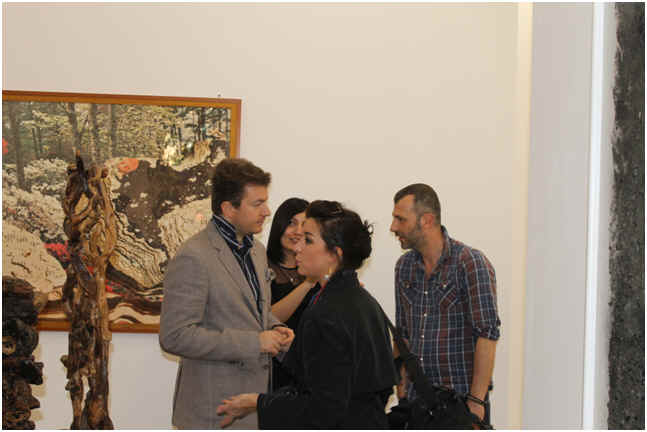
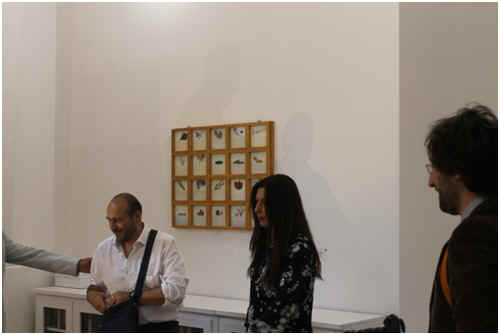
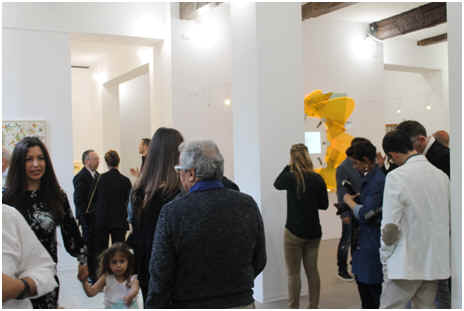
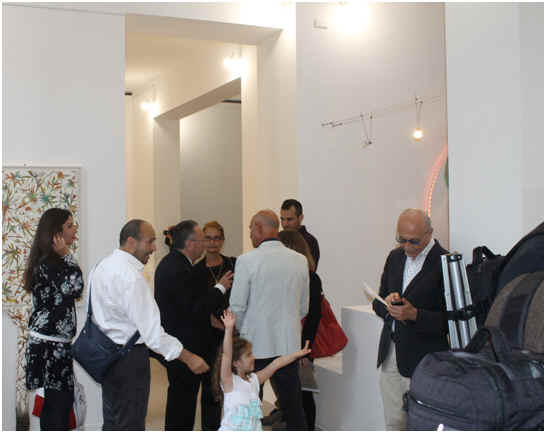
![]()